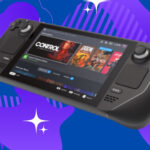More than 1.15 million power banks are currently under an urgent recall across the United States. This significant safety measure comes after multiple consumers reported incidents involving fires and explosions linked to these popular portable charging devices.
Such widespread recalls underscore the critical importance of product safety, especially for electronics that contain powerful lithium-ion batteries. For millions of consumers who rely on power banks to keep their mobile devices charged on the go, this announcement necessitates immediate attention to ensure their safety and prevent potential hazards. The responsible disposal of these recalled units is also a key concern, given the inherent risks associated with damaged or defective lithium-ion cells.
Understanding the Recall: Anker PowerCore 10000
The U.S. Consumer Product Safety Commission (CPSC) has issued a detailed notice regarding this extensive recall.
The Manufacturer and Affected Model
According to a Thursday notice from the U.S. Consumer Product Safety Commission (CPSC), the electronics manufacturer at the center of this recall is Anker Innovations. Anker is a widely recognized brand known for its range of charging accessories, including portable power banks. The specific product line affected by this recall is certain “PowerCore 10000” power banks. These devices are popular for their compact size and ability to provide on-the-go power for smartphones, tablets, and other USB-powered gadgets.
The fundamental issue lies within the device’s core component: the lithium-ion battery inside can overheat. Lithium-ion batteries, while highly efficient and powerful, are susceptible to thermal runaway if not manufactured correctly or if damaged. This defect poses a serious risk to users.
Identified Hazards and Incidents
Anker Innovations itself issued an accompanying announcement, clarifying the severe dangers associated with the overheating battery. The company stated that an overheating battery can lead to “melting of plastic components, smoke, and fire hazards.” This clearly outlines the potential for not just product damage, but also significant risks to personal safety and property. Anker emphasized that this recall was being conducted “out of an abundance of caution to ensure the safety of our customers,” indicating a proactive approach to address reported issues.
The CPSC’s report provides a clearer picture of the incidents that prompted this recall. China-based Anker has received a total of 19 reports of fires and explosions involving these now-recalled portable chargers. These incidents are not merely theoretical risks; they represent real-world occurrences. Disturbingly, these reports include two minor burn injuries to consumers, highlighting the direct physical harm that can result from these faulty devices.
Furthermore, there have been 11 reports of property damage, with the collective cost of this damage amounting to over $60,700. This demonstrates the significant material destruction that can occur when these power banks malfunction, reinforcing the urgent need for consumers to take this recall seriously.
Identifying Affected Power Banks and Purchase Details
For consumers, knowing whether their specific power bank is part of this recall is the first crucial step towards ensuring safety.
Model Number and Sales Information
The recalled “PowerCore 10000” power banks can be identified by their specific model number: A1263. This unique identifier is critical for consumers to check on their devices. It’s essential to locate this number, typically found on the product’s casing, packaging, or in the user manual, to confirm if it matches the recalled batch.
These potentially hazardous power banks were widely distributed across the U.S. They were sold both directly online via Anker’s official website, as well as through major e-commerce platforms including Amazon, eBay, and Newegg. This broad sales reach means a significant number of consumers could unknowingly possess a recalled unit.
The sales period for these devices extended from June 2016 through December 2022. This six-year window indicates that many of these power banks have been in circulation for a considerable amount of time, potentially increasing the likelihood of issues developing with age or repeated use. The price point for these units was approximately $27, making them an accessible and popular choice for a wide range of consumers. This combination of widespread availability, an extended sales period, and an affordable price point contributes to the large number of units currently under recall.
Consumer Action: What to Do If You Have a Recalled Power Bank
If you own an Anker PowerCore 10000 with model number A1263, immediate action is necessary to ensure your safety and facilitate a replacement.
Stop Using Immediately
The most critical instruction for consumers in possession of these recalled chargers is to stop using them immediately. Continuing to use a device known to have a risk of overheating, fire, or explosion puts you and your property in direct danger. It is advised to safely disconnect the power bank from any charging cables and devices, and store it in a cool, dry, non-flammable location, away from anything combustible, until proper disposal or return can be arranged.
Contact Anker for a Free Replacement
Anker Innovations is facilitating a recall process to provide affected consumers with a free replacement for their recalled power bank. To initiate this process, consumers are urged to contact Anker directly. This can typically be done through their customer support channels, which are generally detailed on their official website.
Required Information for Replacement
To streamline the replacement process and verify eligibility, Anker requires specific information from impacted consumers. You will need to submit a photo of your recalled power bank. This photo must clearly show certain details:
- The model number (A1263), to confirm it’s the affected unit.
- The serial number, for specific product tracking.
- Your name, for identification purposes.
- The current date, to confirm the timing of the recall submission.
- Crucially, the word “recalled” written on the product itself. This step is a common practice in product recalls to visibly mark the faulty unit and prevent it from being reused or resold, ensuring it is taken out of circulation permanently.
By following these instructions carefully, consumers can ensure a smooth process for receiving their free and safe replacement.
Proper Disposal of Lithium-Ion Batteries: A Critical Safety Measure
The disposal of recalled power banks, especially those containing lithium-ion batteries with fire risks, requires specific attention and adherence to local regulations.
Do Not Dispose in Regular Trash
Both the CPSC and Anker have explicitly noted that these power banks should NOT be thrown directly in the trash or general recycling streams. This warning is paramount due to the inherent fire risks associated with defective lithium-ion batteries. When damaged, short-circuited, or disposed of improperly, these batteries can ignite, leading to fires in waste bins, collection trucks, or recycling facilities, posing significant dangers to waste management personnel and infrastructure.
The energy density of lithium-ion batteries means that even a seemingly small device can cause a considerable blaze if it experiences thermal runaway.
Check Local Guidance for Safe Disposal
Due to these fire risks, recalled lithium-ion batteries must be disposed of differently than other types of batteries or general household waste. It is absolutely crucial for consumers to check local guidance for proper disposal procedures in their specific area. Local municipalities and waste management authorities often have designated collection points or special recycling programs for lithium-ion batteries and other hazardous waste.
These programs ensure that the batteries are handled safely, often by specialized facilities capable of neutralizing their chemical components and preventing environmental contamination or fire hazards.
Resources for finding local guidance typically include:
- Your city or county’s waste management website. These sites usually have dedicated sections for hazardous waste and battery recycling.
- Local recycling centers or transfer stations. Many of these facilities have specific drop-off points for lithium-ion batteries.
- Retailers that offer battery recycling. Some electronics stores or hardware chains provide battery recycling services.
- Dedicated battery recycling organizations. Websites like Call2Recycle.org offer tools to find local drop-off locations for rechargeable batteries.
By following these specific disposal instructions, consumers play a vital role in preventing fires, protecting waste management workers, and ensuring environmentally responsible handling of hazardous materials. This final step in the recall process is just as important as identifying and stopping the use of the defective product.
Broader Implications: Lithium-Ion Battery Safety
This large-scale recall of Anker power banks serves as a potent reminder of the inherent risks associated with lithium-ion batteries and the broader importance of product safety in the electronics industry.
The Ubiquity and Risks of Lithium-Ion Batteries
Lithium-ion batteries power nearly all modern portable electronic devices, from smartphones and laptops to electric vehicles and, of course, power banks. Their high energy density and lightweight nature make them ideal for these applications. However, this same energy density, when combined with manufacturing defects, damage, or improper use, can lead to serious safety incidents, including overheating, swelling, off-gassing, fire, and even explosion.
Incidents like the Anker recall highlight that even products from reputable brands can experience issues, underscoring the need for continuous vigilance and stringent quality control.
Regulatory Oversight and Consumer Awareness
Regulatory bodies like the CPSC play a critical role in monitoring product safety and initiating recalls when hazards are identified. Their notices are vital for informing the public and ensuring that defective products are removed from circulation. However, consumer awareness and proactive participation are equally important. Many recalls go unheeded, leaving potentially dangerous products in homes. This Anker recall, affecting over a million units, emphasizes the need for consumers to stay informed about product safety alerts, promptly check their devices, and follow recall instructions.
Education on proper charging practices (e.g., using original chargers, avoiding charging on flammable surfaces, not overcharging) and correct disposal methods for lithium-ion batteries is also crucial for preventing future incidents. As electronic devices become more integrated into daily life, understanding and mitigating the risks associated with their power sources is a shared responsibility between manufacturers, regulators, and consumers.








